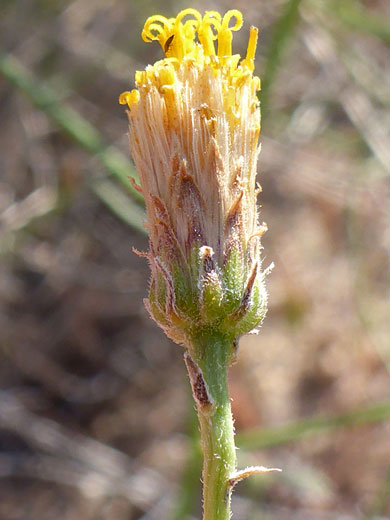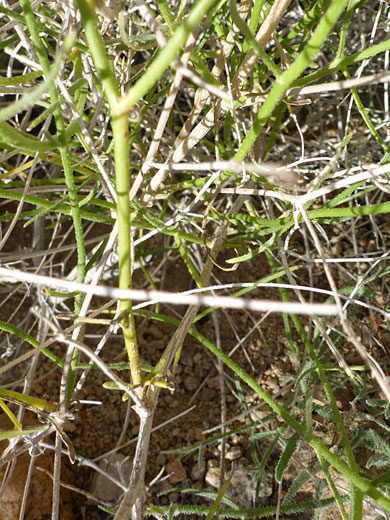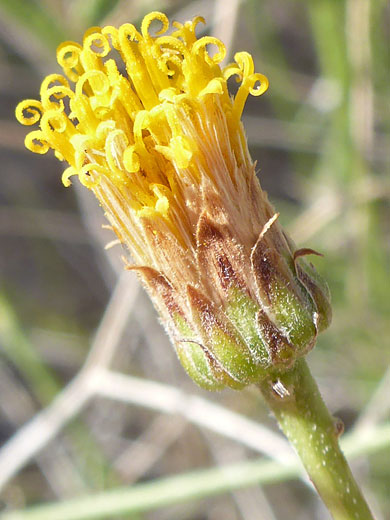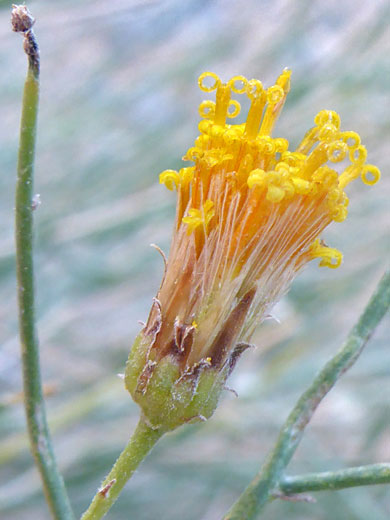
Recurved phyllaries of different lengths; bebbia juncea, Bristol Mountains, Mojave Trails National Monument, California
Common name:
Sweetbush
Family:
Scientific name:
Bebbia juncea
Main flower color:
Range:
South California, south Nevada, most of Arizona and a small part of south New Mexico
Height:
Usually up to 5 feet, sometimes more
Habitat:
Plains, slopes and washes in desert areas; below 5,000 feet
Leaves:
Narrowly elliptic to linear; up to 1.5 inches long
Season:
April to June
Bebbia juncea, an aromatic shrub, can sometimes grow up to ten feet tall, forming large clumps, but is usually less than half this height. The slender stems are woody at the base, light green when young, and branch profusely; they may be hairless, or lightly covered with short, rough hairs. The leaves, relatively few in number, may be opposite or alternate, and are usually stemless. They may have a few sharp lobes, but are generally unlobed.
Flowerheads are produced singly at the branch tips, and they consist only of disc florets, colored yellow-orange, numbering between 20 and 50, and containing both anthers and stigmas. Below the florets are up to 30 phyllaries, differently sized, and arranged in three to five rows; they have ciliate edges and hairy surfaces.
This species flowers year round, with the peak time in the spring. All US plants are var aspera, with linear to lanceolate phyllaries, pointed and often recurved at the tip; var juncea of Baja California has broader phyllaries, with rounded tips.
Flowerheads are produced singly at the branch tips, and they consist only of disc florets, colored yellow-orange, numbering between 20 and 50, and containing both anthers and stigmas. Below the florets are up to 30 phyllaries, differently sized, and arranged in three to five rows; they have ciliate edges and hairy surfaces.
This species flowers year round, with the peak time in the spring. All US plants are var aspera, with linear to lanceolate phyllaries, pointed and often recurved at the tip; var juncea of Baja California has broader phyllaries, with rounded tips.
All Contents © Copyright The American Southwest | Comments and Questions | Contribute | Site Map





